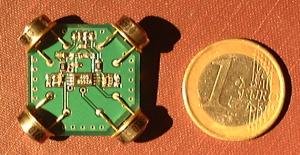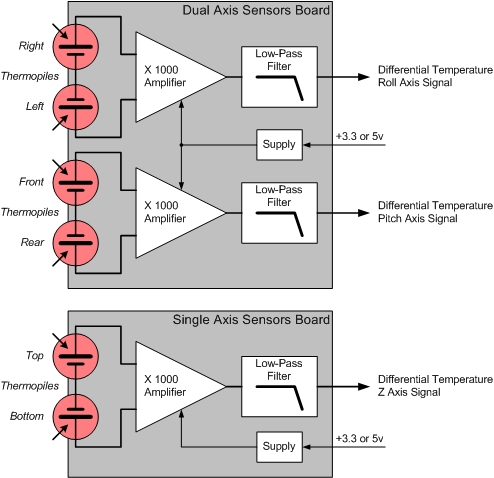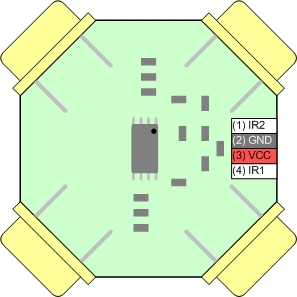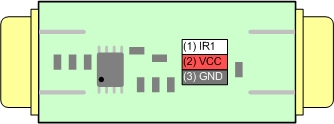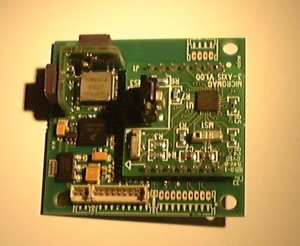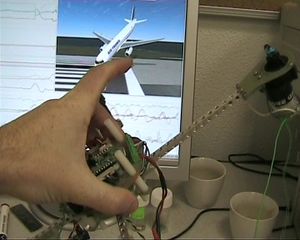Difference between revisions of "Sensors"
| Line 2: | Line 2: | ||
[[Image:ir_sensor_bot_small.jpg|thumb|Paparazzi x-y IR sensor board]] | [[Image:ir_sensor_bot_small.jpg|thumb|Paparazzi x-y IR sensor board]] | ||
The paparazzi autopilot uses infrared thermopiles for primary | The paparazzi autopilot uses infrared thermopiles for primary attitude sensing. The theory is that at zero bank or pitch angle, the difference in the heat between the two sensors should be zero, and at 90 degrees it should be maximum. From this relationship a linear regression is made and angles are calculated during flight. Each pair of sensors measures one axis, a minimum of 2 pairs must be used to measure pitch and roll but best results are obtained thru the use of a 3<sup>rd</sup> pair on the vertical axis. Since the output signal from each sensor pair is proportional to both the attitude and the weather/terrain, systems with only x-y sensors require a ground calibration and may not provide accurate angle calculations as the aircraft travels over terrain with different IR radiation. | ||
=== Architecture === | === Architecture === | ||
Revision as of 21:01, 28 December 2006
Infrared Sensors
The paparazzi autopilot uses infrared thermopiles for primary attitude sensing. The theory is that at zero bank or pitch angle, the difference in the heat between the two sensors should be zero, and at 90 degrees it should be maximum. From this relationship a linear regression is made and angles are calculated during flight. Each pair of sensors measures one axis, a minimum of 2 pairs must be used to measure pitch and roll but best results are obtained thru the use of a 3rd pair on the vertical axis. Since the output signal from each sensor pair is proportional to both the attitude and the weather/terrain, systems with only x-y sensors require a ground calibration and may not provide accurate angle calculations as the aircraft travels over terrain with different IR radiation.
Architecture
Dual Axis Board Pinout
Single Axis Board Pinout
Inertial Measurement
Work is underway to create a complete 17 state Kalman filtered inertial navigation solution! Watch the demonstration video of the current 7-state system.
